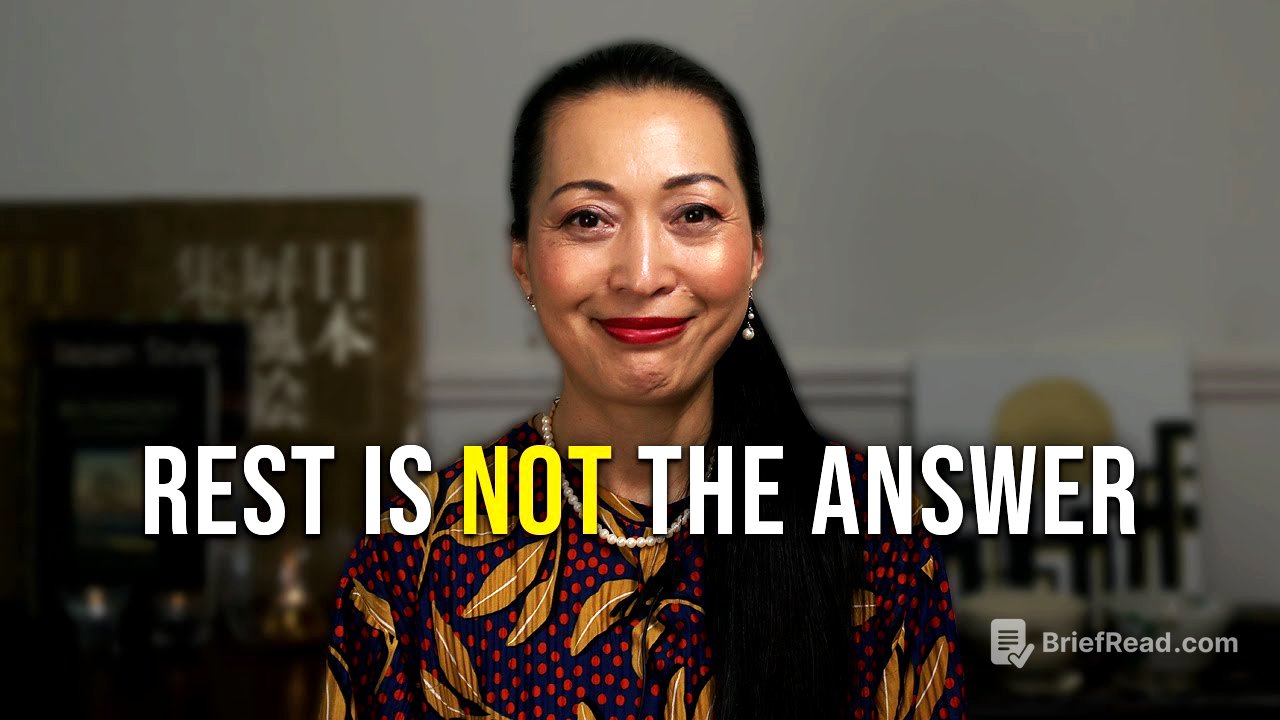TLDR;
This video addresses burnout from a Japanese perspective, offering a simple yet effective tool for those experiencing, recovering from, or on the verge of burnout. It identifies the root causes of burnout, often linked to work-related stress and the pursuit of external validation, and introduces practical steps to regain authenticity and inner peace. The key takeaways include:
- Taking care of your living space to foster self-love and compassion.
- Letting go of the need for external validation and approval.
- Cultivating the ability to ask for help and support when needed.
Introduction to Burnout [0:00]
The video begins by acknowledging the increasing prevalence of burnout and the numerous requests for solutions. Traditional methods like therapy, mindfulness, and rest are helpful, but the speaker introduces a Japanese perspective offering a potentially more effective and long-term solution. This tool is designed for individuals currently experiencing burnout, those who have experienced it in the past, or those who feel they are nearing burnout.
Causes of Burnout [1:09]
The primary causes of burnout often stem from work-related stress, whether in a corporate environment or self-employment. The modern digital world, while offering opportunities for business and connection, also increases the risk of burnout. A significant factor is the pursuit of external approval and validation, coupled with the fear of not receiving it or being punished. This external motivation contrasts with a focus on one's inner world and authenticity.
The Flower Analogy and Authenticity [3:38]
The speaker shares a personal experience of feeling pressured to meet public expectations in creative work, which led to a loss of authenticity. Drawing an analogy to flowers that blossom naturally without seeking praise, the speaker emphasizes the importance of creating from authentic inspiration. This shift reduced pressure and allowed for a more natural and sustainable creative process.
Creating Flow Through Environment [5:08]
To combat burnout, the speaker advises creating flow in both internal and external environments, starting with the daily living space. Taking care of one's immediate surroundings, such as keeping the kitchen and table clear, is presented as an act of self-care. Consciously maintaining a comfortable living environment, including using items usually reserved for guests, fosters self-love and compassion.
Inner World and Immediate Environment [7:22]
The speaker underscores the importance of balancing inner reflection with tangible actions in the immediate environment. This involves not only meditation to create inner space but also actively making the living space comfortable. This approach helps rewire neural pathways and inner dialogue, especially in the context of social media and the pursuit of likes and validation.
Letting Go and Embracing Authenticity [8:36]
The video stresses the importance of letting go of the desire for approval, praise, and validation to achieve freedom and create a new life path. This isn't about selfishness but about becoming more compassionate by living authentically. Authenticity enables individuals to say no and let go of unnecessary burdens, fostering genuine connections with coworkers, bosses, and clients.
Seeking Help and Support [9:42]
The speaker highlights the significance of being able to ask for help, even though it can be challenging due to societal conditioning that emphasizes independence. Recognizing the need for support and seeking it is portrayed as a strength rather than a weakness. This mindset reduces anxiety and fear, enabling individuals to navigate difficulties more effectively. Collaboration is presented as a natural and essential aspect of human interaction.
Tools for Combating Burnout [11:47]
The tools shared in the video include taking care of the inner world and immediate living space, letting go of the need for validation and approval, and cultivating the ability to seek help and support. The speaker emphasizes that the value of life lies in simply being alive, not in achieving external goals. Building a network of trustworthy friends and colleagues, referred to as "nakama" in Japanese, is crucial for mutual support.
Reaching Out for Help [13:13]
The video concludes with an invitation for viewers experiencing or nearing burnout to reach out for one-on-one support, with details provided in the description.









